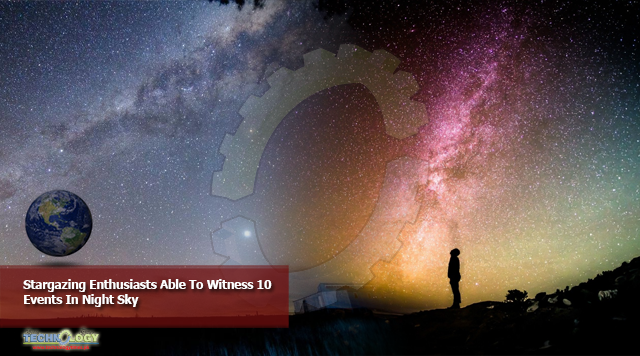From August 1st to the 29th, stargazing enthusiasts will be able to witness up to 10 events in the night sky. The nighttime shows include a few special moons, sighting another galaxy, a meteor shower, and a few planets.

The best part? Everything can be stargazing enthusiasts witnessed with the naked eye, although a pair of binoculars and a telescope won’t hurt either.
August 1 & 2: Planets Will Conjunct with the Moon
For the first two nights of the month, we’ll see two gas giants in the sky. On August 1, the Moon will be right below Jupiter. On August 2, Saturn will appear nearby the Moon.
August 3: Mercury, Venus, & the ‘Sturgeon Moon’
At 2:38 EDT, Venus will rise to appear like the brightest ‘star’ before another planet will appear a few hours later. At 4:42 a.m. EDT, Mercury will be a ‘morning star’ before the sunrise before 6 a.m.
Named by the North Americans after the giant sturgeon fish from the Great Lakes, the Sturgeon Moon is also known as the ‘Blueberry Moon’ and ‘Grain Moon.’ The moon will majestically hang relatively low all night.
August 8: The Red Planet & Another Galaxy
Witnessing Mars this month seems fitting after the success of space launches for missions on the Red Planet. With binoculars, stargazers will be able to see the Andromeda Galaxy, containing one trillion stars, between Mars, the Moon, and the Cassiopeia constellation.
August 9: Two Planets Before Sunrise
Mercury and Venus will appear once more before the sun gets too bright at sunrise. Venus will shine like a bright star with the Sirius constellation while Mercury will be a small red dot in the northeast part of the night sky.
August 12-22: Center of the Galaxy
When the moon is down, the galaxy will shine bright for ten nights. The best nights to stargaze are before the next New Moon on August 19. On the east side of the sky, Jupiter and Saturn will be visible too.
August 11-13: Meteor Shower
The awaited Perseid meteor shower is the year’s most popular display of shooting stars in the northern hemisphere. Luckily, the rest of the world will witness the annual meteor shower as well.
The Sunrise Sunset Calendar can help stargazing keep track of the meteor shower’s peak times depending on where they are in the world. There will be an estimated 40 to 60 shooting stars per hour for these two nights.
August 15: Venus & the Moon
Before nightfall, the crescent moon will shine bright alongside Venus. Orion’s Belt will also be bright with the stars Betelgeuse and Rigel.
August 20-22: New Moon
As we move away from the Sun, this month’s New Moon will illuminate the night sky quite brightly. Underneath the Moon will be the bright star Spica.
August 28-29: Back to the Beginning
This month will end in the same way it began, with the Moon in conjunction with Jupiter for one night and Saturn the next.
Originally published at The science times